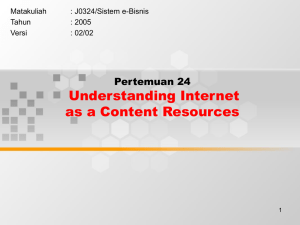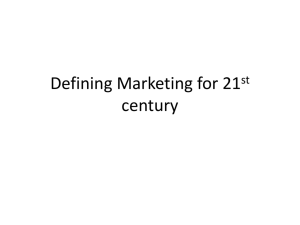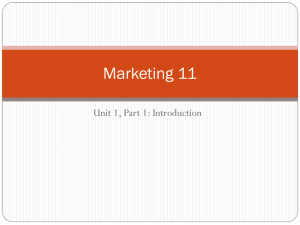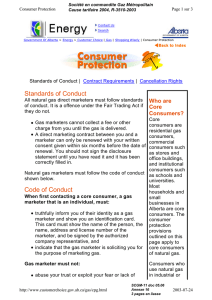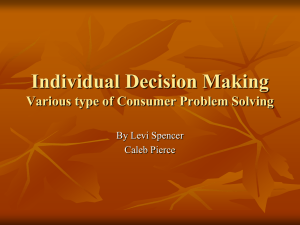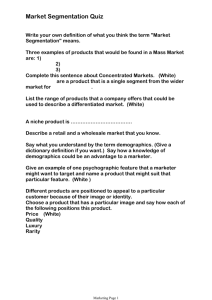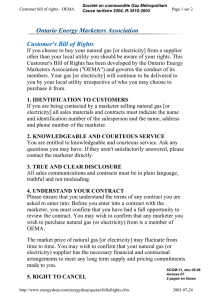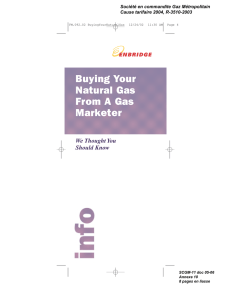January 2010 To Buy or Not to Buy…Influencing Your Customer’s Purchases
advertisement
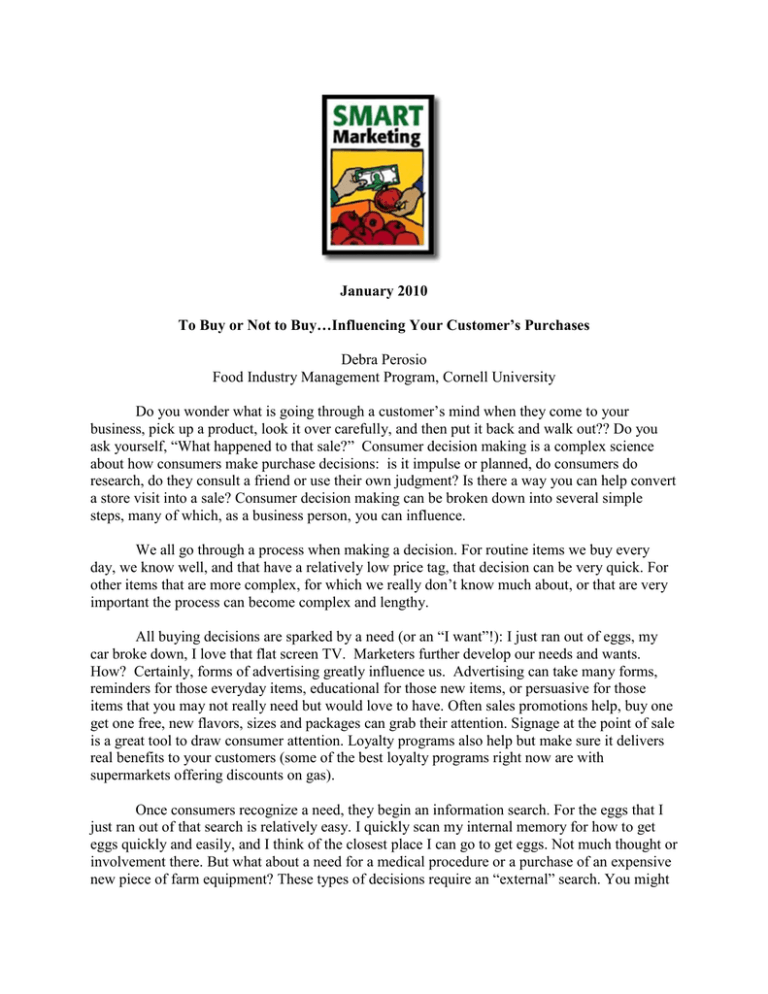
January 2010 To Buy or Not to Buy…Influencing Your Customer’s Purchases Debra Perosio Food Industry Management Program, Cornell University Do you wonder what is going through a customer’s mind when they come to your business, pick up a product, look it over carefully, and then put it back and walk out?? Do you ask yourself, “What happened to that sale?” Consumer decision making is a complex science about how consumers make purchase decisions: is it impulse or planned, do consumers do research, do they consult a friend or use their own judgment? Is there a way you can help convert a store visit into a sale? Consumer decision making can be broken down into several simple steps, many of which, as a business person, you can influence. We all go through a process when making a decision. For routine items we buy every day, we know well, and that have a relatively low price tag, that decision can be very quick. For other items that are more complex, for which we really don’t know much about, or that are very important the process can become complex and lengthy. All buying decisions are sparked by a need (or an “I want”!): I just ran out of eggs, my car broke down, I love that flat screen TV. Marketers further develop our needs and wants. How? Certainly, forms of advertising greatly influence us. Advertising can take many forms, reminders for those everyday items, educational for those new items, or persuasive for those items that you may not really need but would love to have. Often sales promotions help, buy one get one free, new flavors, sizes and packages can grab their attention. Signage at the point of sale is a great tool to draw consumer attention. Loyalty programs also help but make sure it delivers real benefits to your customers (some of the best loyalty programs right now are with supermarkets offering discounts on gas). Once consumers recognize a need, they begin an information search. For the eggs that I just ran out of that search is relatively easy. I quickly scan my internal memory for how to get eggs quickly and easily, and I think of the closest place I can go to get eggs. Not much thought or involvement there. But what about a need for a medical procedure or a purchase of an expensive new piece of farm equipment? These types of decisions require an “external” search. You might start talking to friends, do some research on the web, visit equipment dealerships. High risk and high prices typically produce longer and more extensive information searches. How can you, as a marketer, influence your customers’ decisions? Make sure your website is up to date and easy to navigate and make sure the resources on it are helpful and easy to read. Today, many people start their information search on the web, and if you don’t have a presence there, you may be over looked. Complex decisions require clear information, education, and often extensive customer service. Have educational information readily available, be helpful, offer tours and demonstrations, but maybe most important, offer yourself as a personal consultant for your customer, providing information and follow up throughout the information search process. Once consumers have collected their information, the next step is to evaluate the alternatives. Which doctor should I select for the procedure, which hospital is best, what farm equipment dealership has the best equipment, which brand has the best warranty, which had the best service department, and who has the most competitive price? Usually in these complex situations we decide what attributes are most important to us and set criteria, say maximum price, or best doctor, as our most important attribute when making the decision. As a marketer how can you help your customers work through the evaluation of all of the alternatives? You can find out from them what is most important and work toward attribute. You can boldly compare your product against your competitors and easily illustrate the differences for your customers (think about insurance companies who do this a lot). Once consumers have carefully weighed their alternatives, a purchase usually results. Wait! Your marketing commitment is not over yet. Now is the time to help your customers avoid suffering from “buyer’s remorse,” that nagging feeling you get after making a major purchase; when you start to wonder if it really was a good decision. Consumers want reassurance that they made the right decision, and marketers can help their customers feel confident about their purchases. How about follow-up emails, letters, thank you postcards that can also provide additional information about the product they just bought? And how about a phone call a month or two after the sale…does the customer have any questions, is everything working properly? This is also a good time to remind them of other services/products that you have that may complement or enhance the product they just purchased from you. Remember, the more complex, risky and/or expensive a purchase decision is, the more “help” a consumer needs in making that decision. As a marketer your chances of converting a visit to a sale is much better if you can influence a customer from need recognition to alleviating buyer’s remorse. “Smart Marketing” is a marketing newsletter for extension publication in local newsletters and for placement in local media. It reviews elements critical to successful marketing in the food and agricultural industry. Please cite or acknowledge when using this material.

